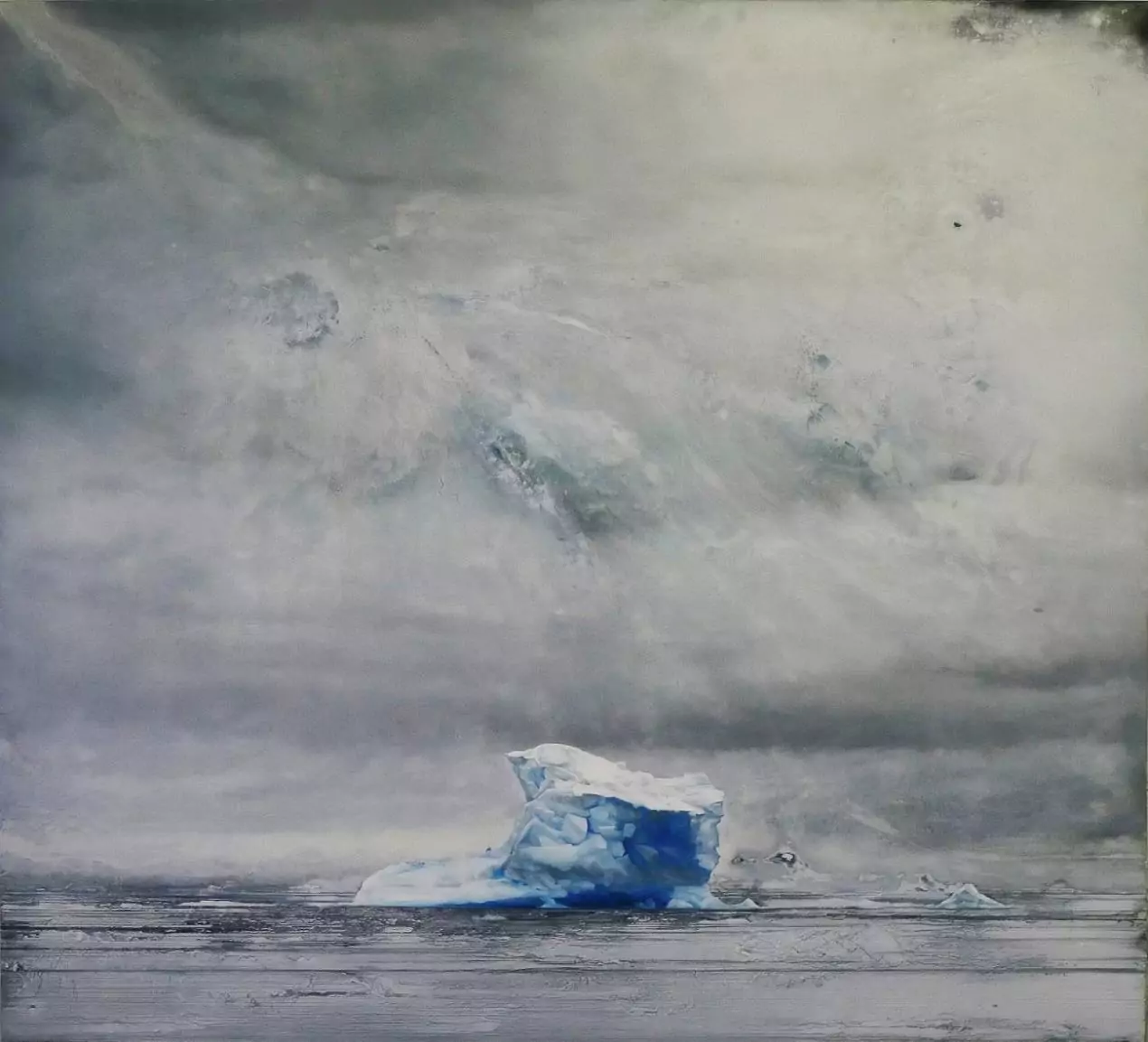
Opening at Southampton City Art Gallery on 19 October, Arctic Mirage brings together for the first time an ongoing body of artwork by Southampton-based Julian Grater. It explores the contemporary Arctic, a region undergoing rapid glacial and human change.
With the sea ice melting in the Arctic at an unprecedented rate and an increase in licences issued to find rare minerals and resources as the ice recedes, it is a timely subject in which we all have a vested interest.
Julian Grater says: “I’m extremely excited to be launching Arctic Mirage with Southampton City Art Gallery, the home of a permanent collection that I’ve admired for so many years. Ultimately through the development of this project, I hope to stimulate awareness and debate, whilst encouraging interest in this dynamic environment and its people.”
Since participating in international residency programmes in the early 2000s at The Banff Centre for the Arts in Canada and the University of Alaska, Fairbanks, USA, Grater has been extensively drawn to this subject and has made many trips to the Arctic. He has undertaken further residencies at the Ilulissat Kunstmuseum, Greenland, and was selected as artist in residence for the Scott Polar Research Institute at the University of Cambridge.
Grater’s practise covers many forms of media, and the exhibition includes large-scale paintings of the Greenland sea ice, photography and drawing. His work explores the landscape and the visualisation of the Arctic alongside intimate portraits of Greenlandic Inuit people. These are part of a series called tø (thaw), which uses glacial ice from the Kangia Icefjord, Western Greenland, as an additional drawing medium, used to dissolve and partially erase the drawings.
Drawings from Grater’s Biomarkers series will also be included. They examine the famous Mid-Cambrian fossils of the Burgess Shale, located within The Stephen Formation between the summits of Mount Wapta and Mount Field in British Columbia. The Burgess Shale fossil bed is especially significant in relation to the history of life on Earth, holding compelling evidence of the first major global extinction event. The drawings will be shown alongside fossil specimens over 500 million years old, on loan from the Natural History Museum, London.
Leader of Southampton City Council, Councillor Satvir Kaur says: “This amazing exhibition by local talent, Julian Grater, really highlights the dramatic transformation happening in the artic landscape and the effects on local Inuit communities caused by human-induced climate change. Please do take the opportunity to visit this captivating and thought-provoking exhibition for free at Southampton City Art Gallery.”
The Gallery has produced a publication in conjunction with the artist, available exclusively in the Gallery shop, featuring paintings, drawings and photography from the exhibition, together with insights from Grater into his artistic practice and enduring fascination with the Arctic.



